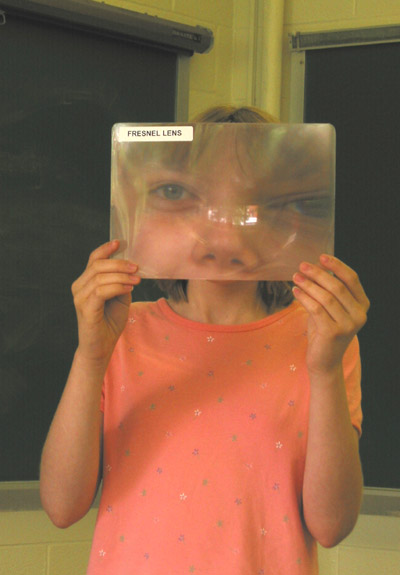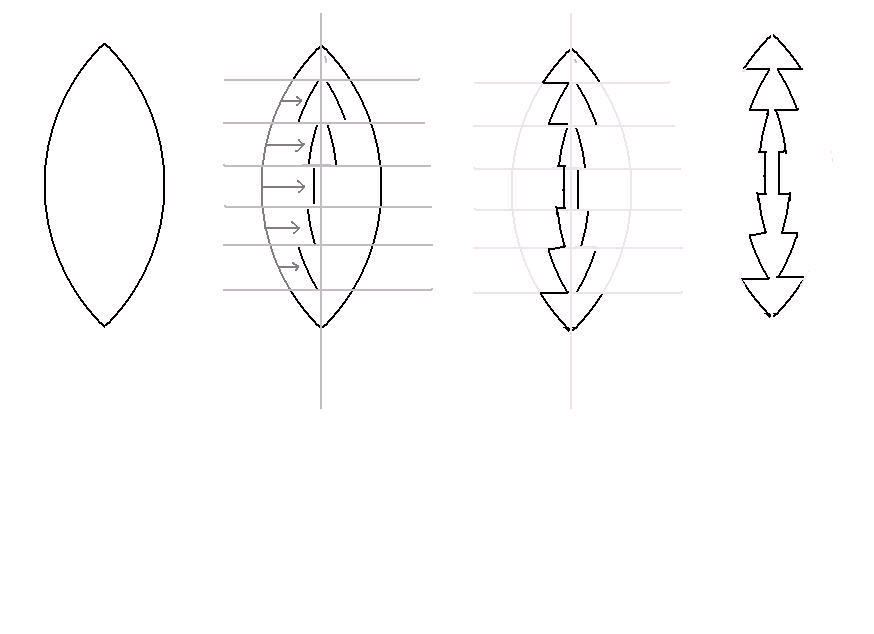
Instructions for:
Fresnel Lens
The Fresnel Lens was first introduced in 1822 by a French scientist named Augustin Fresnel as an improvement to lighthouse lamps. The design, basically a bulls-eye arrangement of optical prisms, is an effective way to focus light, without using a solid glass lens, which would be extremely heavy, fragile, and expensive. The modern version of Fresnelís Lens is made of a thin sheet of plastic, with the prisms molded into one surface. It works like any lens, albeit it does sacrifice some optical quality, as small inconsistencies between prisms can cause some obstruction. But, as a durable and inexpensive lens, it is ideal for the classroom.

A Fresnel Lens has the same curvature as a normal lens (as light is bent only at the interface between lens and air). The middle glass section of a normal lens is completely eliminated in the Fresnel design. The diagram above outlines this idea. A normal lens is shown at left, and a typical Fresnel lens at right. You can see that the curvature of the surfaces would be the same for light incident from either side.
The Fresnel Lens included in the Zoo is a converging lens, meaning that it focuses light rays inward along a central axis (which points perpendicular to the surface of the lens, away from the central point of the prism array). This means that it can be used as a simple magnifier, the most classroom-suitable use. Let students experiment with the lens, by discovering its properties and uses firsthand.
Copyright 2004 Straley/Pinney - The University of Kentucky Physics Petting Zoo